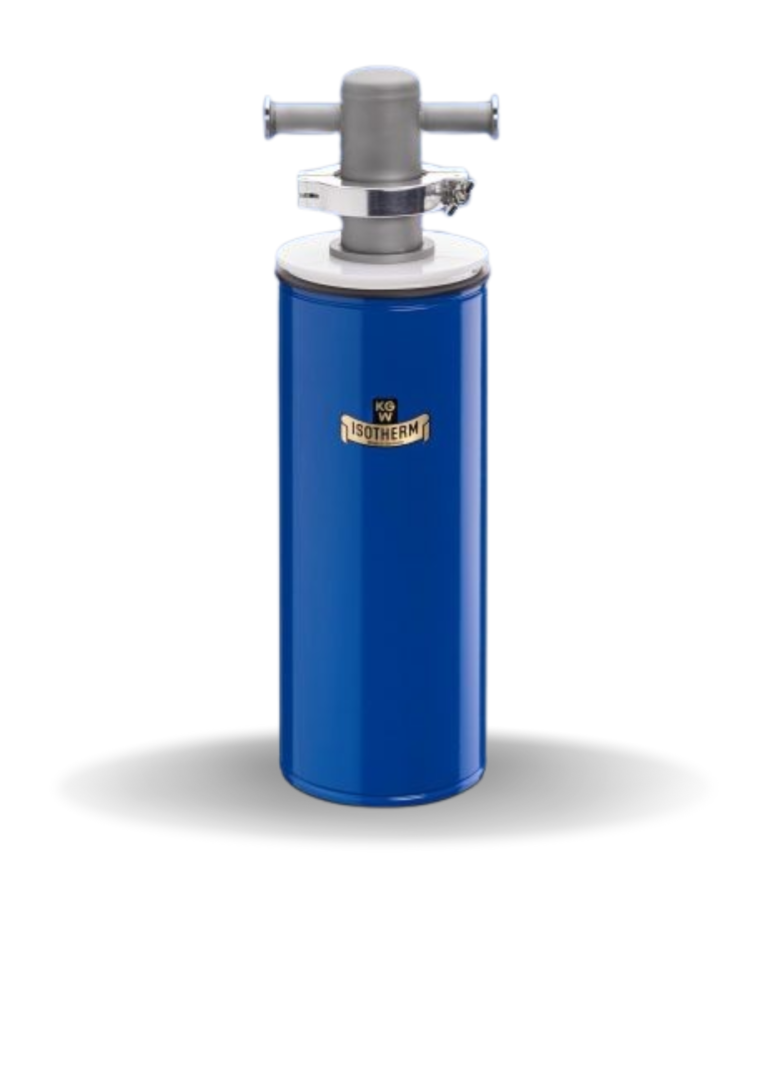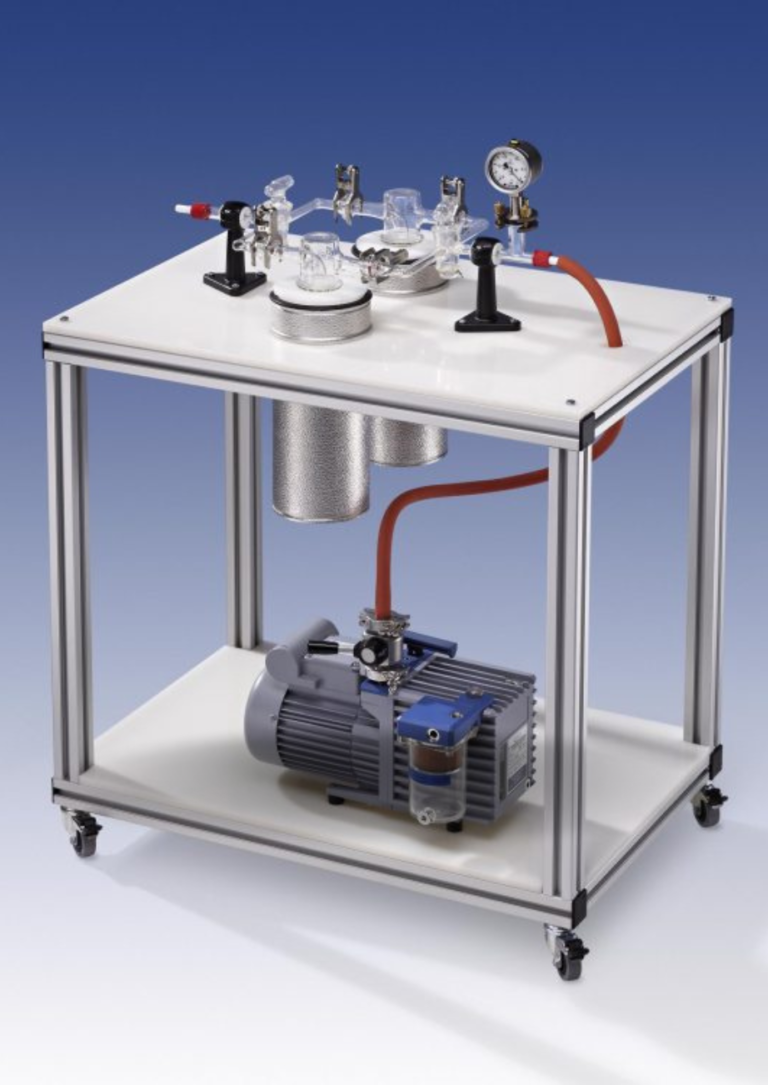Cold traps / cold fingers made of glass or metal : A cold trap / cooling finger has the task of collecting and retaining the condensate from a gas flow, for example upstream of the vacuum pump. As different substances may be present in the gas flow (e.g. water / solvents / acidic or alkaline gases), the condensation temperature of the substance to be condensed must be considered first. The material (glass or metal) and the geometry of the condensate freezing wall play a major role in a cold trap / cold finger. In order to increase the performance of a cold trap, it is sometimes fitted with baffles so that the gas in the condensation chamber is swirled more strongly and thus better condensation can take place on the cold inner wall of the cold trap. In general, it should be noted that the liquid used for cooling (LN2 or CO2) should be at least 50°C colder than the condensation temperature of the substance that is to be condensed out of the gas flow. If, for example, a solvent such as methanol (melting point -98°C) or acetone (melting point -95°C) is to be filtered out of the gas flow, LN2 (approx. -196°C) is required as a coolant in order to achieve sufficient cooling capacity in the cold trap. The melting point of water is 0°C. This means that a mixture of CO2 and acetone (approx. -77°C) with water vapor would be sufficient.

Cold trap type GKF
Gas purification by condensation, e.g. in vacuum systems
Made of stainless steel 1.4301 (1.4404 on request)
High thermal resistance

Cold Traps KF 29 / KFL 29
Gas purification by condensation, e.g. in vacuum systems
Made of borosilicate glass3.3
High chemical & thermal resistance
Simple, cost-effective design

CP station with two cold traps - GP
Dewar type 18 CAL-S with bead
Useful volume with cold trap: 2000ml
Cooling finger condensate volume: max. 250ml




